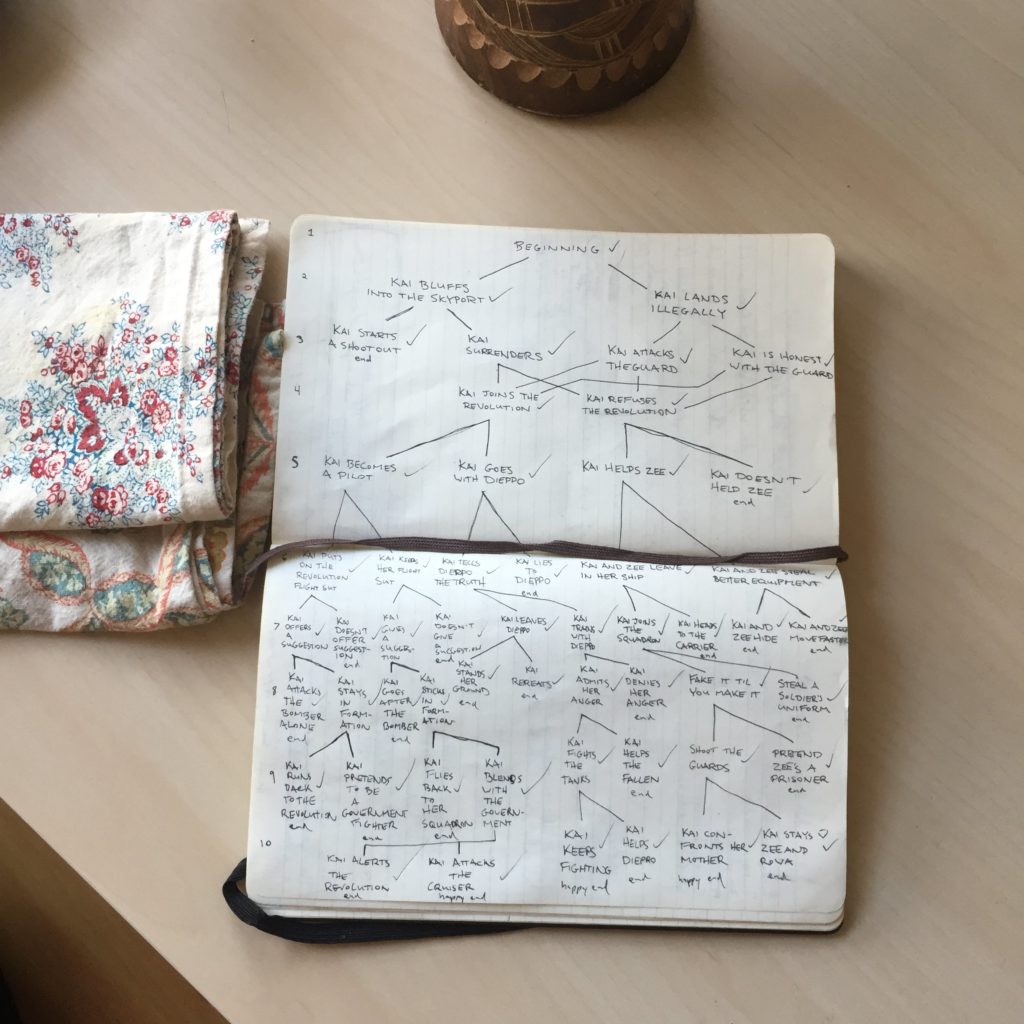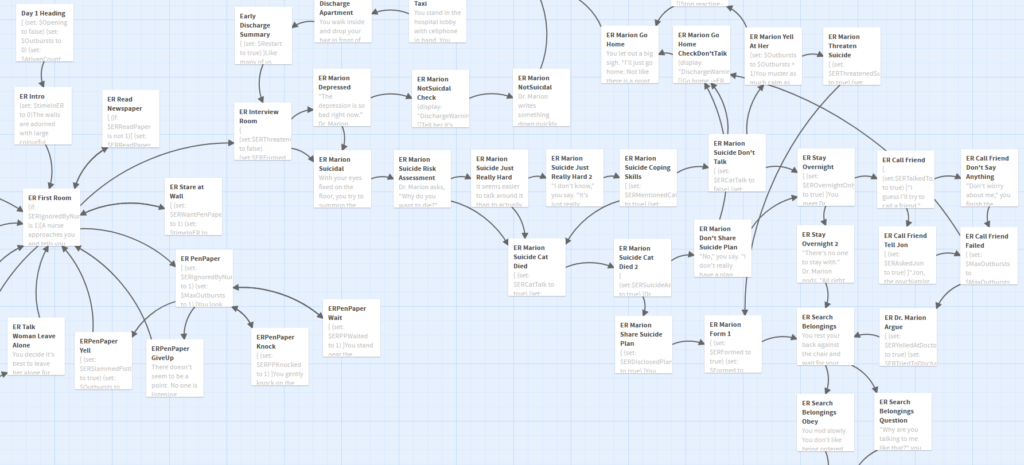Update: I’ve ceased hosting a public version of this project, but you can still check out the source code and run it for yourself.
Twine 2 is a popular tool for making hypertext interactive fiction, but there’s something about physical printed “choose your own adventure”-style gamebooks that isn’t quite replicated when you’re playing on the Web. Maybe it’s the experience of keeping your finger in a page break to facilitate a “save point” for when you inevitably have to backtrack and try again?

As a medium for interactive adventures, paper isn’t dead! Our 7-year-old is currently tackling the second part of a series of books by John Diary, the latest part of which was only published in December! But I worry that authors of printed interactive fiction might have a harder time than those producing hypertext versions. Keeping track of all of your cross-references and routes is harder than writing linear fiction, and in the hypertext

Twinebook
So I’ve thrown together Twinebook, an experimental/prototype tool which aims to bring the feature-rich toolset of Twine to authors of paper-based interactive fiction. Simply: you upload your compiled Twine HTML to Twinebook and it gives you a printable PDF file, replacing the hyperlinks with references in the style of “turn to 27” to instruct the player where to go next. By default, the passages are all scrambled to keep it interesting, but with the starting passage in position 1… but it’s possible to override this for specific passages to facilitate puzzles that require flipping to specific numbered passages.

Obviously, it doesn’t work with any kind of “advanced” Twine game – anything that makes use of variables, Javascript, etc., for example! – unless you can think of a way to translate these into the written word… which is certainly possible – see Fighting Fantasy‘s skill, stamina, luck and dice-rolling mechanics, for example! – but whether it’s desirable is up to individual authors.
If this tool is valuable to anybody, that’s great! Naturally I’ve open-sourced the whole thing so others can expand on it if they like. If you find it useful, let me know.

If you’re interested in the possibility of using Twine to streamline the production of printable interactive fiction, give my Twinebook prototype a try and let me know what you think.
@twinethreads That looks rad… one of those things I always wanted to try myself but never had time to… https://t.co/CuzkPmTHvi
I may have to check out Twine. We use Quest to teach kids how to build “interactive fiction” as part of our second year course. It can do “choose your own” adventures or “proper” adventure style games.